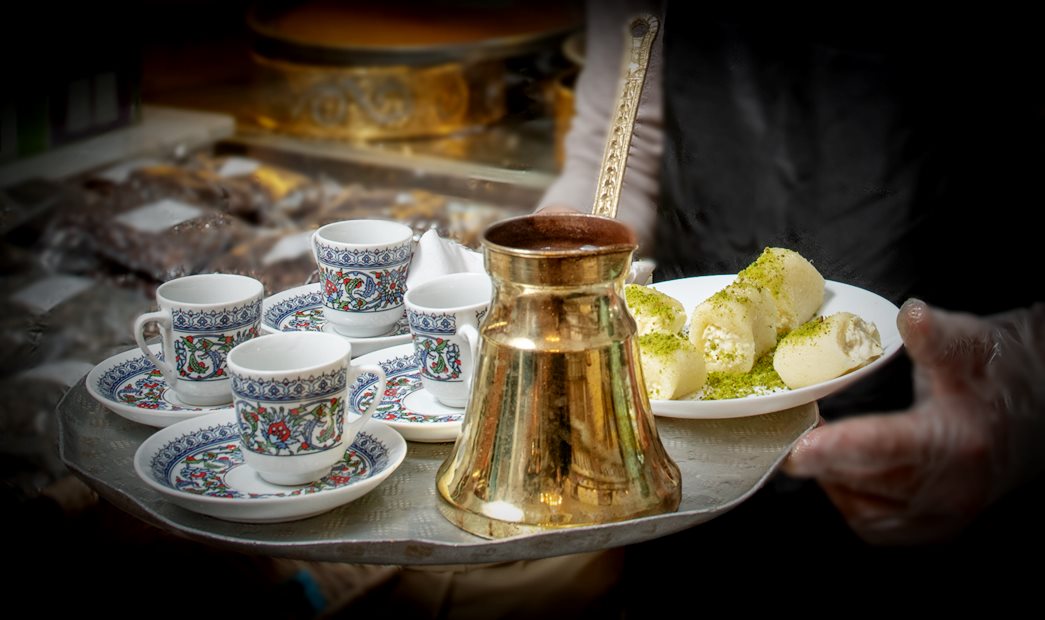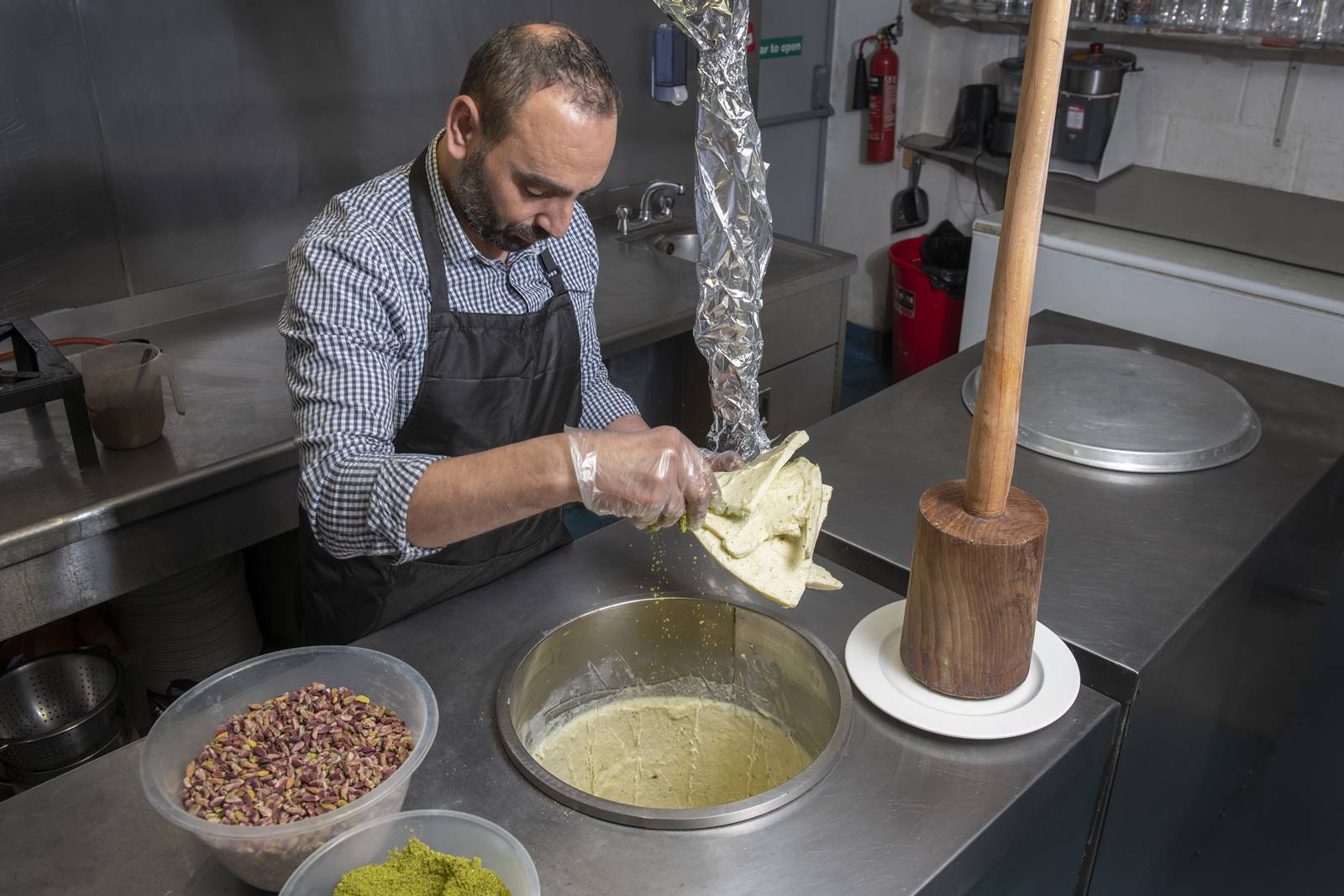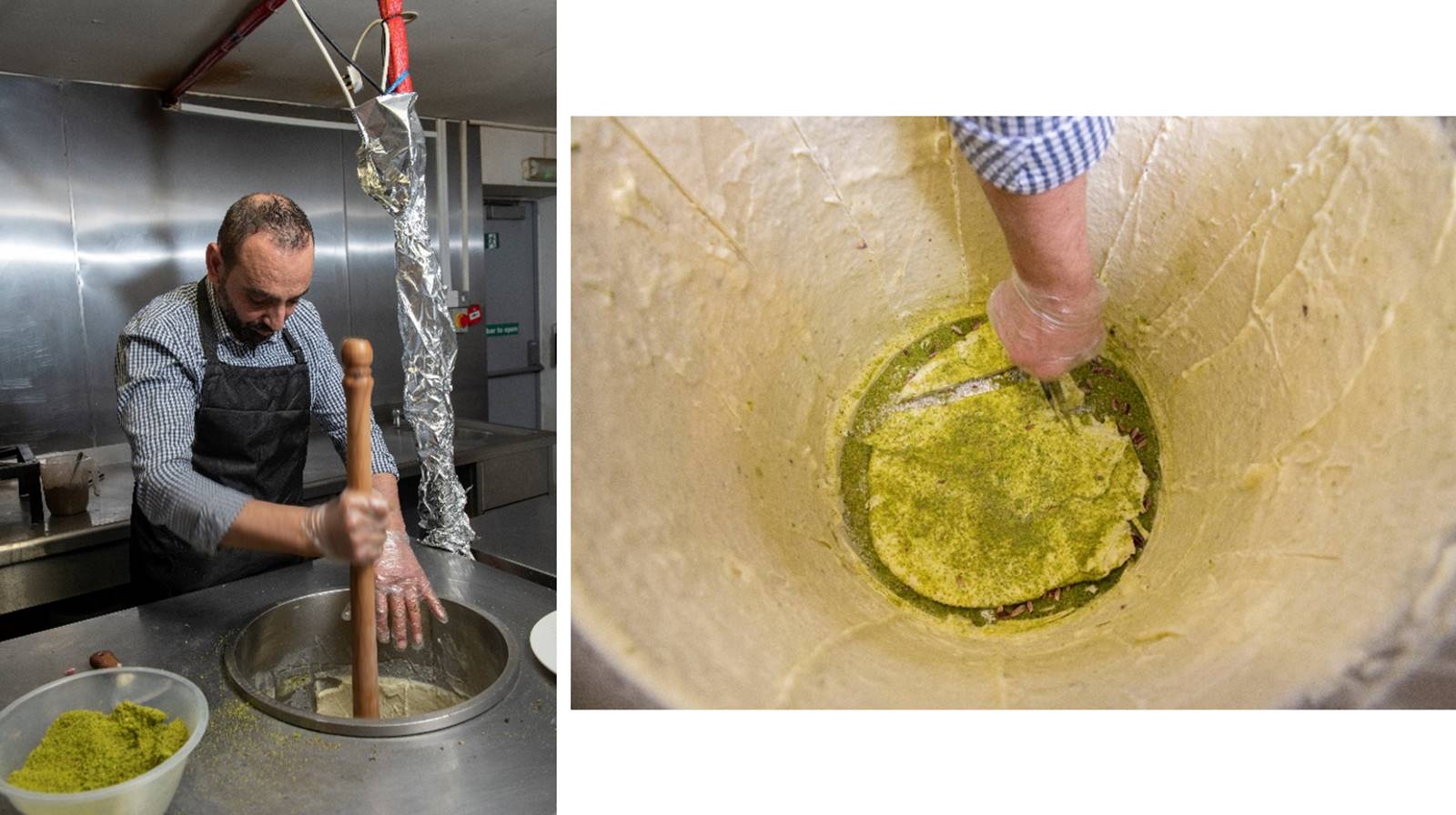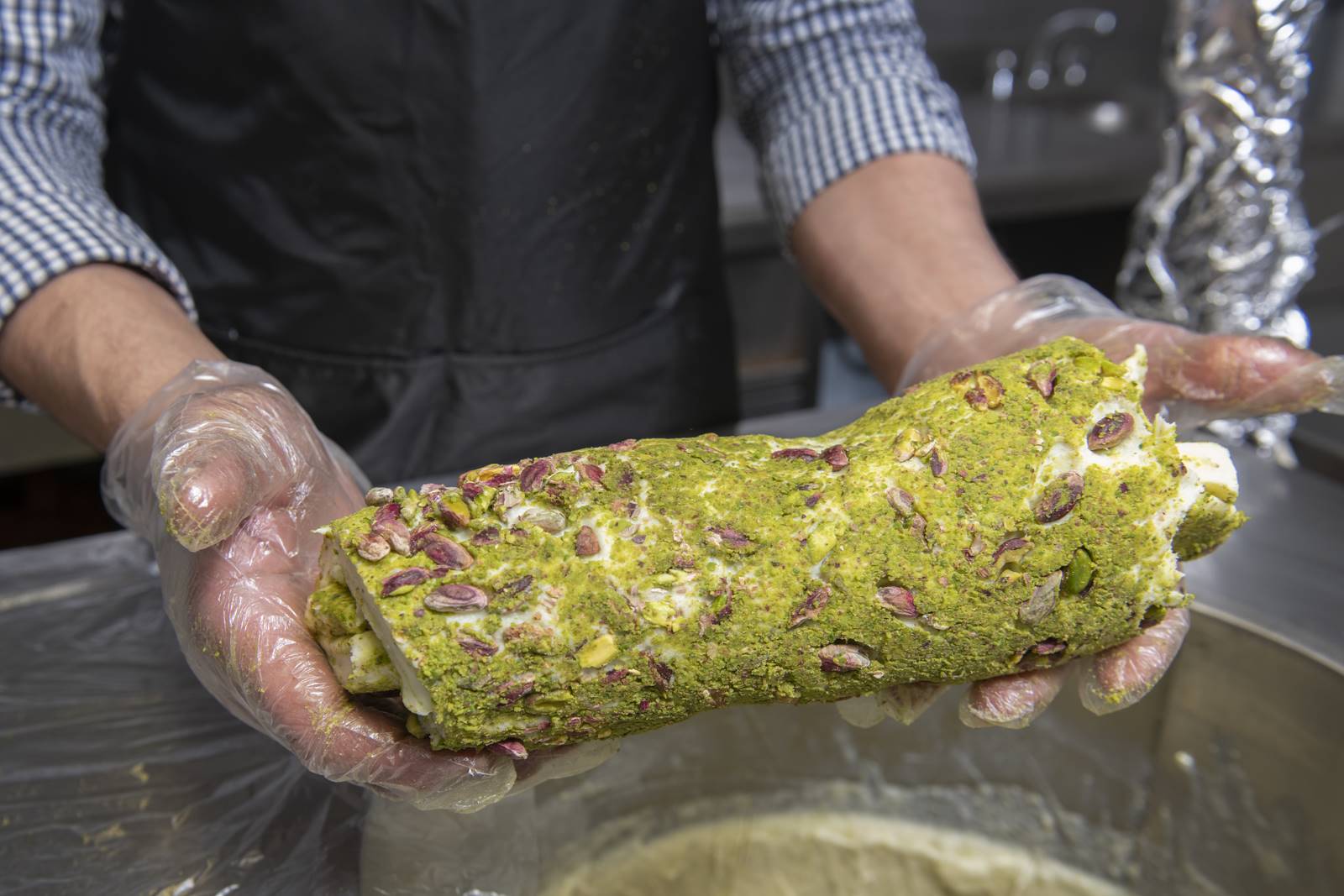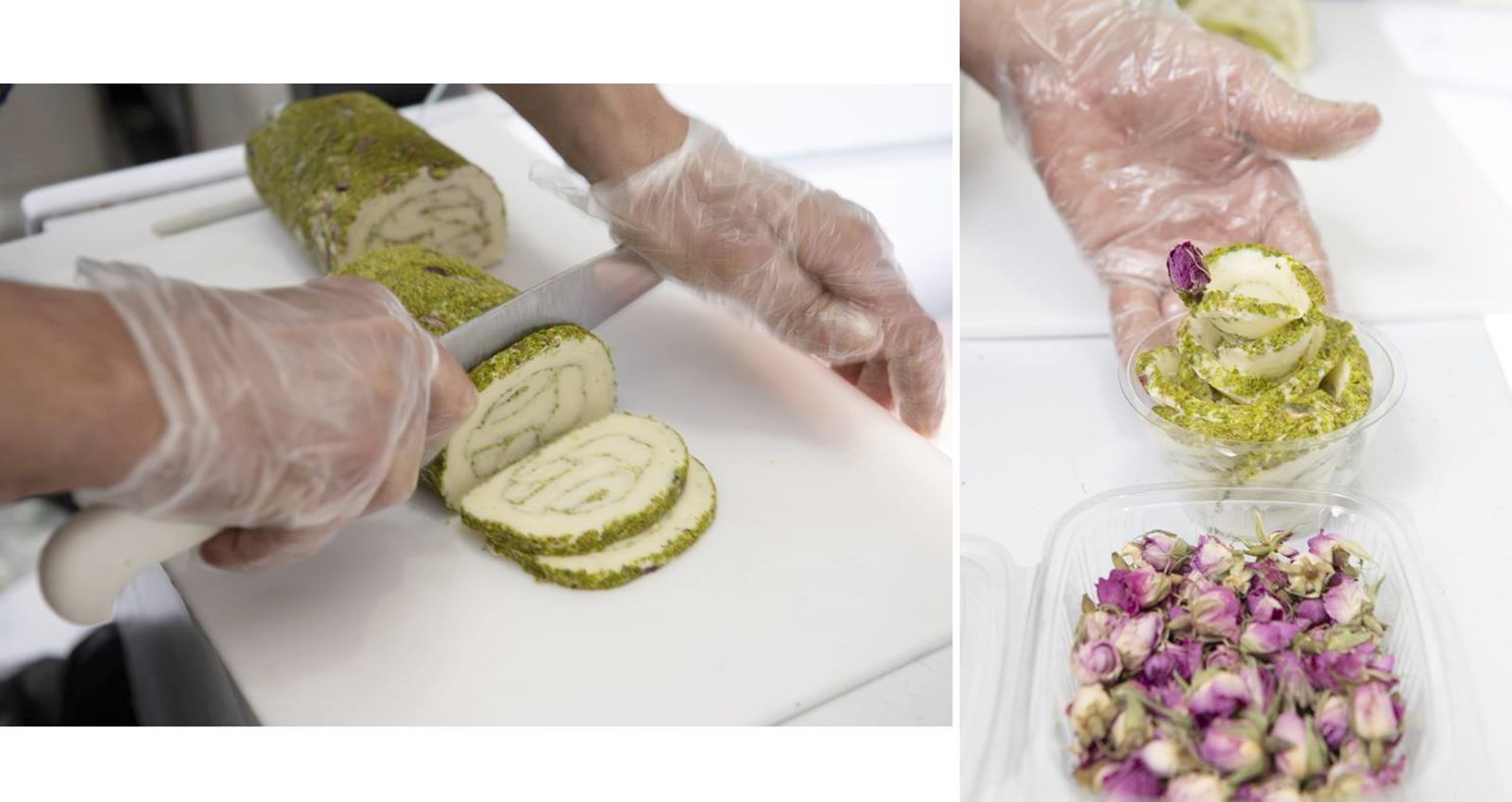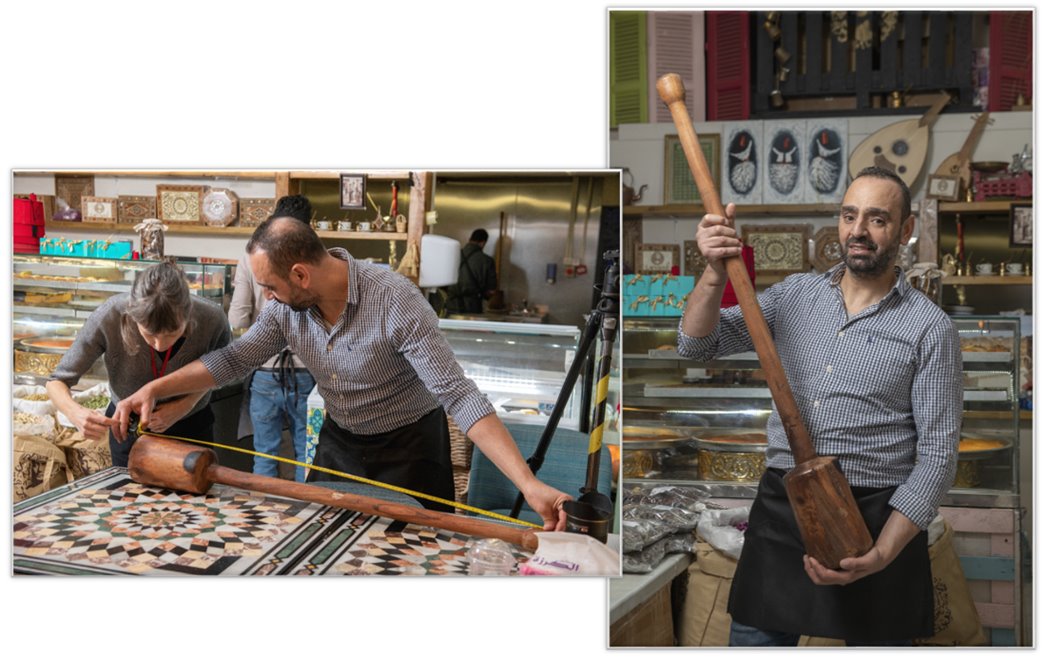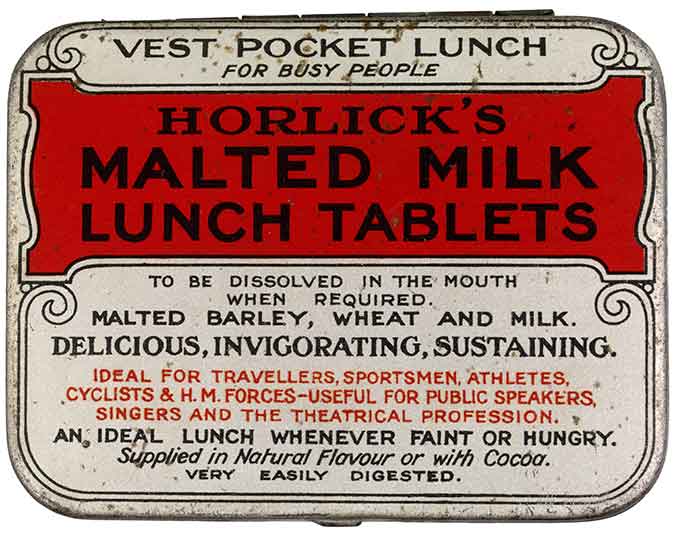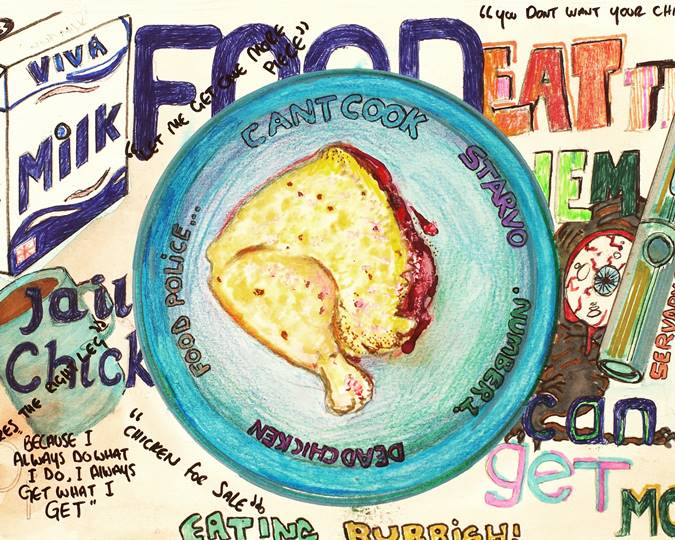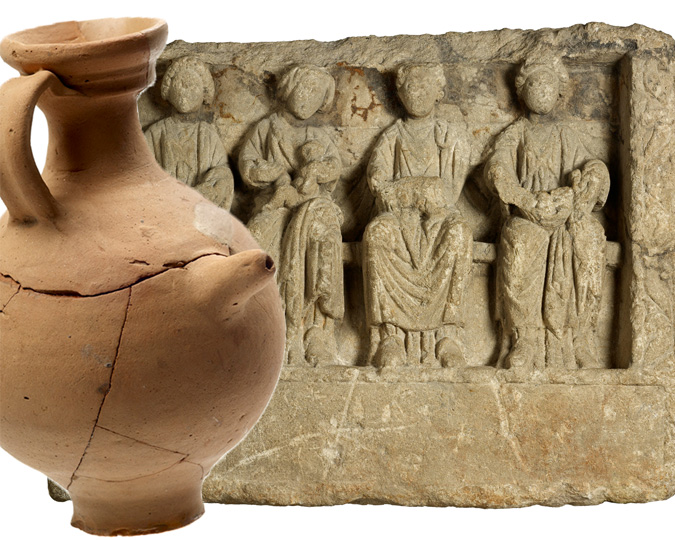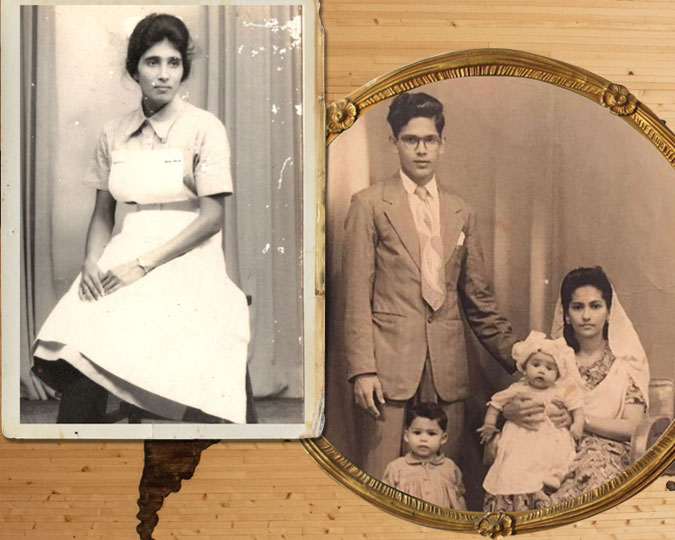Drawing on the cultures of the Greater Levant region east of the Mediterranean Sea, and embodying many aspects of Damascus, Levant café is a place that aims to be a “home from home” in Park Royal, London. And the highlight is the traditional, chewy textured ice cream from Syria — booza.
The Italian gelato is now a London staple, Japanese mochi ice creams are fast becoming a dessert favourite, and a summer visit to an Indian restaurant seems rather incomplete without a kulfi-falooda at the end. Past and present migrations have shaped what we eat and drink today in London. The dishes offered by the capital’s food businesses are influenced by long-standing cultural cooking traditions and also by new culinary habits encountered in the city and by the ingredients available here. Food holds meaning far beyond sustenance; it is a cultural product that can carry many complex associations with one’s sense of home and of identity.
Drawing on the cultures of the Levant, the Eastern Mediterranean region of West Asia, Levant café founder Sameh Asami has created a place which aims to be a “home from home” in Park Royal, London. Here the influence of Damascus, the beautiful city in which he grew up, permeates not only the food and drink, but also the furniture, décor, books and artefacts. Café regulars today include many Londoners from Arabic diasporas.
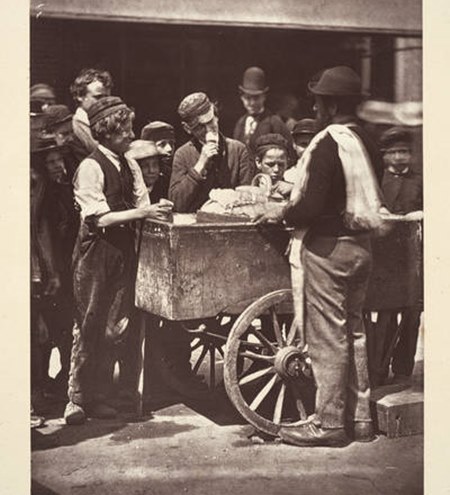
A street vendor selling 'half penny lick' ices, c.1877. (ID no.: NN29451/7b)
Asami enjoys bringing people together and is passionate about sharing Damascene culture with those interested. Central to this place is the Syrian dessert booza, a form of ice cream with a very long history in the Levant area and one with a claim to being the first dairy ice cream ever invented!
The origins of ice cream are much debated, with Persian sharbat and Chinese rice-based frozen desserts both centuries old. According to author Mary Isin, the first dairy version is booza, which she dates to around the 15th century from the Levant region. However, dairy ice cream was most likely first introduced to London by Carlo Gatti, moving to the city from an Italian speaking part of Switzerland and bringing the dessert to a wide public as a “penny ice” in 1851.
Syrian booza: an ice cream with a difference
Like gelato, booza includes staple ingredients of milk and sugar. It is distinctive in combining these with ‘sahlab’ (powdered orchid tuber), mastic resin and ‘qishtah’, coagulated milk similar to dense cream. Additional flavours such as pistachio or rose are added, although fruit can be used as a less-traditional option, and Levant also offers a chocolate booza. The ingredient qishtah is itself a Syrian specialty and is handmade at the Levant café, also serving it up with pastries and other sweets.
The resulting ice cream is stretchy, chewy and dense. Often, it is coated with chopped pistachio then rolled up in the style of a swiss roll that’s on display at the counter. The roll is sliced and formed into petal-like curls for serving. The distinctive texture comes partly from the addition of mastic and sahlab, but also from the method used to make booza. The technique involves pounding the frozen mixture with a large pestle and is an art handed down through generations.
It is said that in Damascus, the earliest versions of booza were made using ice brought down from nearby Mount Jabal Al-Shaykh (also known as Mount Hermon) to freeze the mixture. The efforts involved meant that it was a delicacy only affordable by the wealthiest. Today, the recipe is — less romantically — typically chilled in a specialised refrigeration unit. However, the key remains the action of pounding the frozen mixture by hand using a booza pestle. This beats out the air to create the dense pliable texture needed.
The story of the Syrian ice-cream maker
Asami comes from a family with a long tradition in dairy products. He can remember booza being made in his home as a child growing up in a neighbourhood of Damascus. His mother’s side of the family were renowned for their cheeses, yoghurts, qishtah and also booza. To learn the trade, Asami started practising at the age of 10, being tutored in the skill by his uncles during school holidays. It was at this time that he was given his own apricot-wood booza pestle to carry him forward into his career. At 120cm long, it was adult size and made from hard wood.
For a booza maker, their pestle has great value and significance, which goes far beyond being a tool of work. Each artisan has their own pestle, it is never shared and is for many years as part of their practice. Asami explains that over time, the shape moulds to their hand, and the base is shaped by the unique style of their practice. He adds that while more recent booza pestles in Damascus come with a plastic base, for him there is no substitute for wood. “This piece of wood has a soul… I’d consider it as dear to me as my dearest friends... I took it with me from Al-Sham (the Old City of Damascus) to Lebanon and brought it from Lebanon to here,” he shares.
Asami retired his original pestle, after decades of use, and it is now part of the museum’s permanent collection. The pestle, together with an oral history recording with Asami, helps us shine a light on his unique story and on the bigger picture of the many people from across the world who call London their home. Asami continues to make booza at Levant café and uses a newer wooden booza pestle from Damascus.
Establishing Levant in Park Royal
Asami explains that, after coming to London with his wife Rana, he wanted to identify a place in the city where they “could simply sit, drink some coffee, read some Arabic literature, enjoy some Arabian booza, eat things culturally unique like qishtah”. As the couple could not find it, they decided to create it! Their vision was for a place that would be quintessentially Syrian-Damascene — replete with traditional decorative craft and an Arabic lending library.

Asami offers booza ice cream to customers at Levant.
"We wanted to present the Syrian kitchen, as well as Syrian confectionary and ice cream (booza) — things which are characteristic of our country,” explains Asami. Starting in 2013, the idea developed was that the café would primarily serve the Arabic community, and also showcase Syrian cuisine to others. He adds, “we saw a real need for such a space. We wanted to create a place where people could feel at peace; for it to be a place of respite and tranquillity.”
It was important to have both indoor and outdoor areas — this enabled Asami to create a garden terrace with Syrian fountains, characteristic seating and olive trees. With help from a Syrian friend, who had business experience in London, they found the current premises in Park Royal, west London.
At Levant café you can find many elements of Arabian-style homes, including floor tiling and windows with coloured glass panes and light blue painted wooden frames. These interiors combine with the smells of dried herbs and flowers for tea, cardamom-scented coffee and the sound of booza being pounded. Asami says that for visitors arriving “you’d probably forget that you’re actually in Park Royal — it’s a space that people yearn for”.
This contemporary acquisition arose from the London Eats (Curating London) programme in 2021-2022, in which we worked with people across the capital to explore Londoners’ relationship with food and drink. The activities forged new community partnerships and added to the London collection drawing on people’s own lived experiences.








